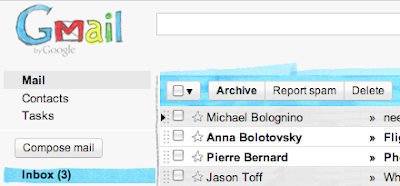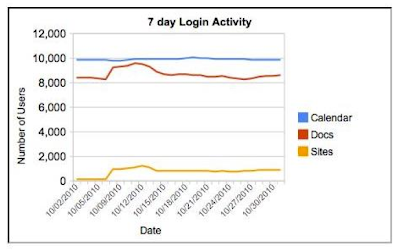To paraphrase an old adage, ‘tis the season to go shopping—and this year, ‘tis the season for shopping smart. Beginning en masse on Thanksgiving, when a significant number of major retailers opened their doors to allow bargain detectives to take advantage of early deals, people have been showing their shopping savvy, with no signs of stopping.
Using Insights for Search and research data from a Google/OTX study, we took a look at some trends we’re seeing from consumers in the U.S.—a new kind of shopper, the rise of mobile and a near-seamless online-to-store connection—and then satisfied our inner cool-seeker by taking a look at some of the most searched-for holiday gifts.
The new shopper
This year’s holiday shoppers are the smartest searchers in history. They’re searching for more specific terms and looking for more information than ever—from printable coupons to take into their local store, to the location of said stores; some people are even scanning barcodes to get more information about a product.
Read more > Deck the halls with smarter shopping
Using Insights for Search and research data from a Google/OTX study, we took a look at some trends we’re seeing from consumers in the U.S.—a new kind of shopper, the rise of mobile and a near-seamless online-to-store connection—and then satisfied our inner cool-seeker by taking a look at some of the most searched-for holiday gifts.
The new shopper
This year’s holiday shoppers are the smartest searchers in history. They’re searching for more specific terms and looking for more information than ever—from printable coupons to take into their local store, to the location of said stores; some people are even scanning barcodes to get more information about a product.
For example, searches for [black friday ads], [thanksgiving coupons], [black friday shipping code] and [buy one get one free] skyrocketed this year, as super-smart shoppers did their research before heading online or to the stores. They also made sure to get ahead of the Cyber Monday game: searches for things like [cyber monday deals] and [cyber monday sales] rose much quicker and earlier this year than last.

Shoppers didn’t stop looking for information once Cyber Monday arrived: [best cyber monday deals 2010] was the second-fastest rising search in the U.S. yesterday. Other top searches related to Cyber Monday included:

Mobile matters
For years, we’ve heard that it’s “the year of mobile.” This year it’s actually true, and people are embracing access to information on the go. Anyone who has a smartphone has a personal assistant now—and in their pocket, no less! People are using their mobile phones to compare prices, look for store locations and inventory in stock locally, and find deals.
According to research we conducted with OTX, 52% of U.S. smartphone users plan to use their phone to compare prices during the holiday shopping season and 40% plan to use their phones to read product reviews. We’ve seen evidence of this trend through the increased use of Google Shopper, a mobile shopping app that helps shoppers on the go research items and find the best place to buy them—whether online or in a nearby store.
Online meets offline
This year, both consumers and retailers are thinking about shopping differently. Gone is the wall between online and offline research and purchasing; consumers think about online and offline behavior relatively seamlessly these days—and retailers do too. Retailers are integrating things like inventory data across channels so that people can find what they’re looking for easily, online and off. Search queries show this crystal clear connection between information-hunting online and purchasing offline.
Searches for [black friday store hours], [printable coupons], and specific store names and hours have risen dramatically in the last year, as consumers do their homework prior to leaving home to shop.

Hot holiday gifts
Each holiday shopping season brings with it a number of buzzworthy toys. While we can’t be sure which toys will be on that list this year, searches for a number of items have risen significantly in recent weeks and months.
Those looking for toys for all ages have recently looked for information related to [squinkies], [lalaloopsy], [educational toys] and [ereaders]; searches for all of the above have risen dramatically in the past 30 days, as have searches for classic toys such as [legos] and [cabbage patch kids].
For lovers of a different kind of gift, a royal engagement may have prompted a rush on sapphire rings; searches for the same have risen dramatically in the past 30 days.

If you’d like to learn more about this year’s holiday shopping season, including some tidbits on what retailers are thinking, check out the Google Retail Blog for useful information.
In the meantime, happy (smart) shopping—and we hope you had a fruitful Thanksgiving, Black Friday and Cyber Monday!

Shoppers didn’t stop looking for information once Cyber Monday arrived: [best cyber monday deals 2010] was the second-fastest rising search in the U.S. yesterday. Other top searches related to Cyber Monday included:

Mobile matters
For years, we’ve heard that it’s “the year of mobile.” This year it’s actually true, and people are embracing access to information on the go. Anyone who has a smartphone has a personal assistant now—and in their pocket, no less! People are using their mobile phones to compare prices, look for store locations and inventory in stock locally, and find deals.
According to research we conducted with OTX, 52% of U.S. smartphone users plan to use their phone to compare prices during the holiday shopping season and 40% plan to use their phones to read product reviews. We’ve seen evidence of this trend through the increased use of Google Shopper, a mobile shopping app that helps shoppers on the go research items and find the best place to buy them—whether online or in a nearby store.
Online meets offline
This year, both consumers and retailers are thinking about shopping differently. Gone is the wall between online and offline research and purchasing; consumers think about online and offline behavior relatively seamlessly these days—and retailers do too. Retailers are integrating things like inventory data across channels so that people can find what they’re looking for easily, online and off. Search queries show this crystal clear connection between information-hunting online and purchasing offline.
Searches for [black friday store hours], [printable coupons], and specific store names and hours have risen dramatically in the last year, as consumers do their homework prior to leaving home to shop.

Hot holiday gifts
Each holiday shopping season brings with it a number of buzzworthy toys. While we can’t be sure which toys will be on that list this year, searches for a number of items have risen significantly in recent weeks and months.
Those looking for toys for all ages have recently looked for information related to [squinkies], [lalaloopsy], [educational toys] and [ereaders]; searches for all of the above have risen dramatically in the past 30 days, as have searches for classic toys such as [legos] and [cabbage patch kids].
For lovers of a different kind of gift, a royal engagement may have prompted a rush on sapphire rings; searches for the same have risen dramatically in the past 30 days.

If you’d like to learn more about this year’s holiday shopping season, including some tidbits on what retailers are thinking, check out the Google Retail Blog for useful information.
In the meantime, happy (smart) shopping—and we hope you had a fruitful Thanksgiving, Black Friday and Cyber Monday!























